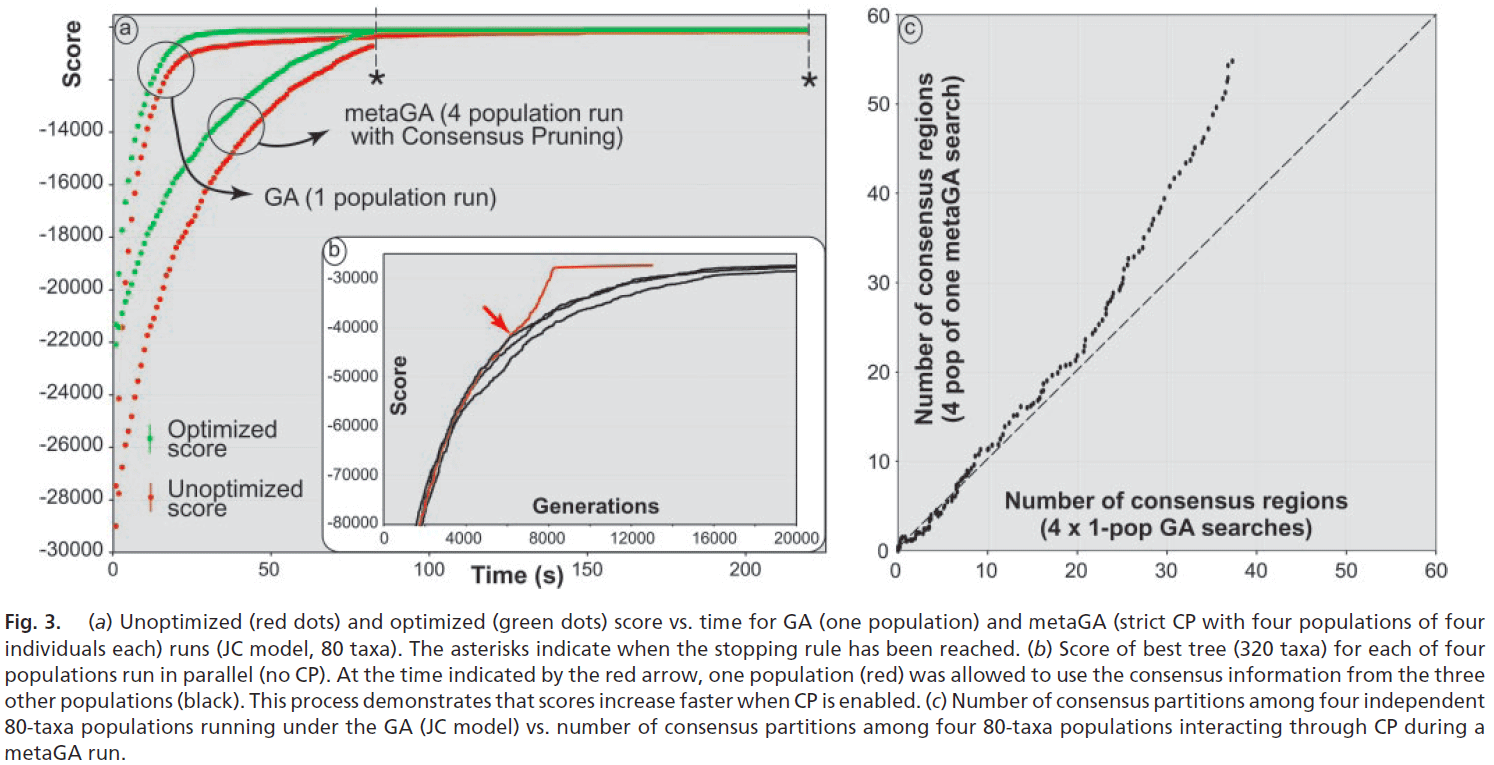The traditional genetic algorithm (GA) is a hill-climing approach that mimics features of biological evolution (i.e. mutation, selection, and recombination) in order to optimize the solution to a problem for which no exact solution exists. We have discovered that by adding one additional component, population structure, the efficiency of the algorithm can be improved dramatically. Briefly, two or more populations (containing proposed solutions to the problem) independently evolve (optimize) via mutation, selection and recombination. Every n generations, solutions are compared across populations. Components of the problem that have identical solutions across a majority (or all) of the populations are fixed for future generations. This approach is termed consensus pruning because when a consensus among the populations is reached for a subset of the problem, the dimensionality of search space is reduced for the remainder of the search. The effect of consensus pruning is to increase the efficiency of the search as time progresses. Consensus pruning solves two of the major shortcomings of traditional GAs: 1) the efficiency of the run decreases through time, and 2) it is difficult to determine when to stop searching. This new algorithm has been applied with great success to the problem of large phylogeny inference. We are currently looking for additional application areas.

